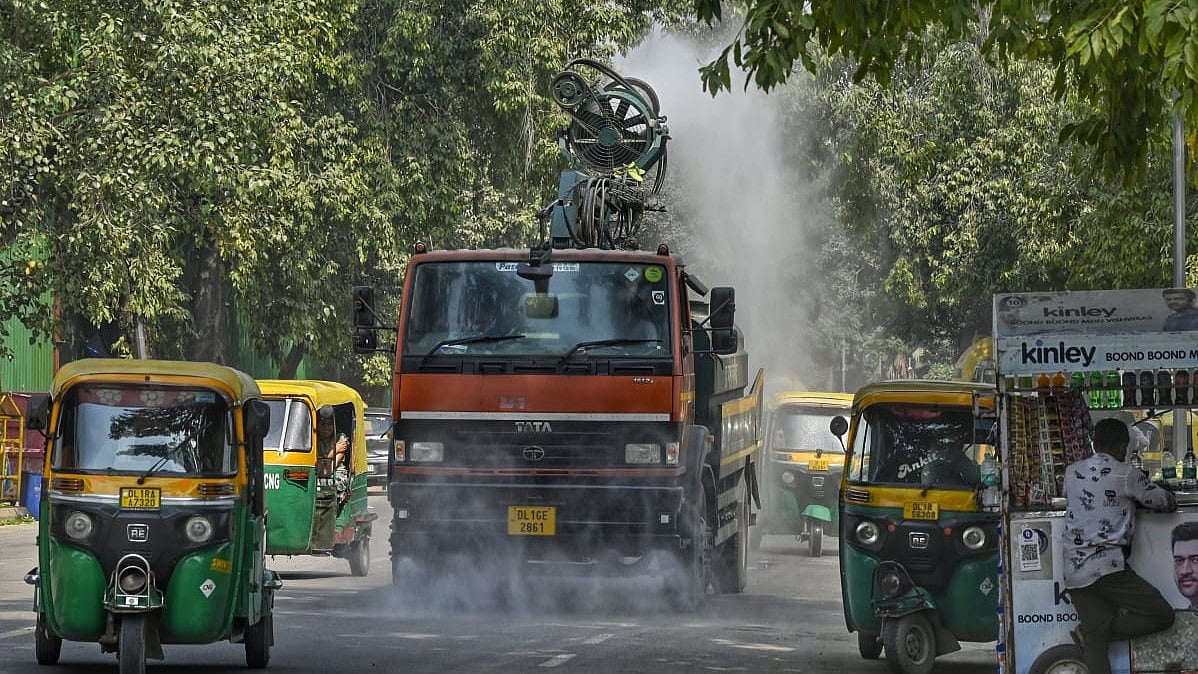Nation
Delhi-NCR wakes up to ‘very poor’ air quality on Diwali morning
Doctors say Delhi’s polluted air is like smoking 10 cigarettes a day, each breath silently searing the lungs

As dawn broke over the Delhi-National Capital Region (NCR) on Monday, 20 October, the city awoke to a sky heavy with smog, where the festive lights of Diwali seemed dimmed beneath a pall of pollution.
The Air Quality Index (AQI), a silent sentinel of the air we breathe, registered a hazardous 335 at 8 am, plunging Delhi into the “very poor” category, according to the Central Pollution Control Board (CPCB). The bursts of crackers on the eve of the festival had left a smoky veil over the metropolis, adding to the already swelling haze of noise and particulate matter.
Forecasters warn that this toxic embrace may deepen in the coming days, with air quality expected to sink further into the “severe” category on Tuesday and Wednesday, as local emissions mingle with stagnant winds and temperature inversions, creating a churning cauldron of winter smog. The Supreme Court’s limited permission for green crackers has done little to soothe the city’s beleaguered lungs.
Doctors warn that inhaling Delhi’s toxic air is like drawing in the smoke of ten cigarettes each day — each breath a silent sting, searing the lungs with invisible fire.
Published: undefined
Responding to this alarming environmental crescendo, the Commission for Air Quality Management (CAQM) in the NCR swiftly activated Stage-II of the Graded Response Action Plan (GRAP). Sunday had already seen a troubling climb in AQI, with the daily average reaching 296 (“Poor”) and surging past 300 by evening, nudging the city firmly into the “very poor” zone. The CAQM’s GRAP sub-committee, guided by forecasts from the India Meteorological Department (IMD) and the Indian Institute of Tropical Meteorology (IITM), predicted continued “very poor” conditions, driven by localized emissions and stagnant atmospheric layers.
To counter this menace, the sub-committee rolled out a robust 12-point Stage-II action plan. The blueprint calls for intensified daily mechanical sweeping and water sprinkling on major roads, dust suppression at traffic corridors and hotspots before peak hours, and stricter enforcement of waste disposal regulations. Construction sites are under heightened scrutiny, and power supply management will limit diesel generator use to essential services, including hospitals, railways, Metros, airports, sewage plants, and telecom projects.
Traffic congestion will be eased with personnel deployed at chokepoints, while higher parking fees are aimed at deterring private vehicle use. Public transport receives a bolstering boost with additional CNG and electric buses, Metro services, and off-peak incentives. Resident Welfare Associations have been instructed to provide electric heaters to prevent biomass burning, and only electric, CNG, or BS-VI diesel inter-state buses will be allowed entry into Delhi.
Citizens are urged to embrace cleaner habits — favour public transport, avoid dusty construction zones, and refrain from burning waste—as part of a collective effort outlined in the Citizen Charter for Stages I and II.
With the city’s breath held under this smoky siege, CAQM officials continue close monitoring, vowing regular reviews and stringent enforcement. The escalation of pollution, compounded by stubble burning in neighboring regions and relentless vehicular emissions, serves as a stark reminder of the urgent need for regional cooperation to reclaim Delhi’s winter skies from the choking grip of smog.
With agency inputs
Published: undefined
Follow us on: Facebook, Twitter, Google News, Instagram
Join our official telegram channel (@nationalherald) and stay updated with the latest headlines
Published: undefined